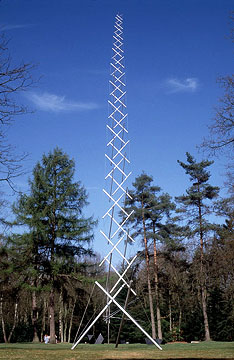Pandia Raj Ramar, a PhD research student in the Structures Group of the Department of Engineering, has won one of the Hangai Prizes awarded at this year's International Association for Shell and Spatial Structures (IASS) Symposium in Beijing.

The Hangai Prize is given by the IASS for the most innovative paper submitted by a young researcher. Raj's paper is entitled 'Using Symmetry for Tensegrity Form-finding'.
Raj is working with the Department's Dr Simon Guest on the development of novel symmetric tensegrity structures. Tensegrity structures were first explored by the artist Kenneth Snelson, to produce structures such as the 18 metre high Needle Tower, seen in the photograph below. They are a remarkable structural form, where disconnected compression members are supported by a continuous cable network that is in tension. Raj has applied the tools of symmetry analysis and group representation theory to simplify the key step of 'form-finding' for tensegrity structures. The paper presented at the IASS 2006 symposium shows examples of his method where a simple analytical solution gives all possible symmetric configurations of certain tensegrity structures.
Raj is supported by the Gates Cambridge Trust, and received additional support from the Department of Engineering and Jesus College to attend the IASS symposium.


